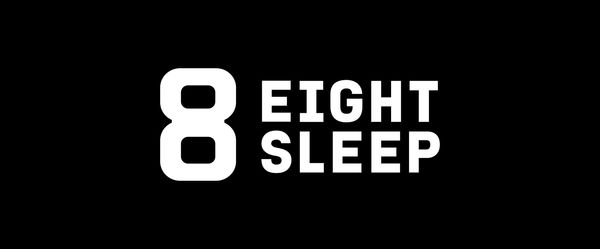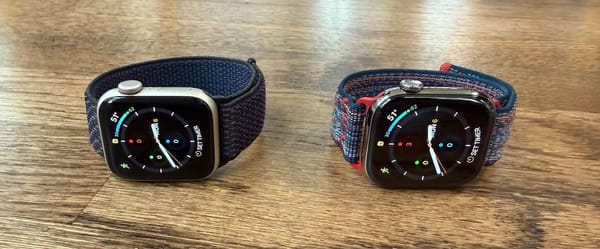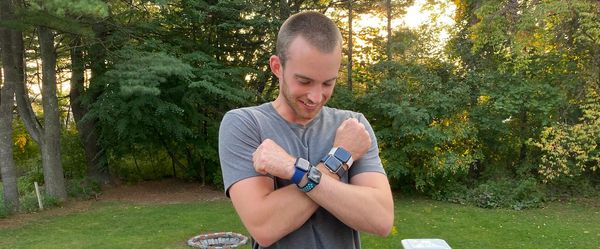Eight Sleep Pod 5 Cover Review: Insights After Four Years as a User

In 2022, I spent $2,000 on the Eight Sleep Pod 2 because I didn't trust the influencer hype and there wasn't a single genuine, unbiased review online. Four years later, I've bought every generation since (Pod 3 and Pod 4), and my conclusion hasn't changed much: sleeping cool and getting effortless sleep tracking makes me happy. In fact, I notice how much I hate being without it whenever I'm away from home.
But here’s the thing. Every year Eight Sleep rolls out small upgrades and markets them hard. I wasn’t excited to upgrade, but I bought the Pod 5 cover to review it. The new cover swaps last year’s tappable zones for physical temperature buttons and adds compatibility with Eight Sleep’s new $1,000 blanket.
Since I’m not made of money, I skipped the Pod 5 hub and kept my Pod 4 hub. The main hub change is a built-in speaker for alarms and soundscapes, which I don’t care about.
Are these incremental changes enough to justify the cost? For Pod 4 owners, probably not. But if you're new to Eight Sleep, intrigued by the blanket, or you disliked the tappable zones from last year, I'll help you figure out if the Pod 5 is right for you, based on my experiences, sleep-testing data, comfort observations, and a realistic breakdown of what it costs.
Black Friday / Cyber Monday Update:
My link unlocks the largest holiday discount: $500 off Pod 5 or $700 off Pod 5 Ultra. It should auto-apply at checkout. Thanks for supporting the site!
Is Pod 5 Worth it? TL;DR (9/10 Rating)
Best for you if:
- You have different temperature preferences from your partner
- You can’t get your room to your preferred temperature
- You want sleep tracking without wearables
- You're interested in Eight Sleep’s new blanket integration
Skip it if:
- You sleep alone
- You have an extremely hot room
- You are already content with your sleep quality
- You like to snuggle with your partner
- You already have Pod 4 (upgrades not worth it)
Temperature Control
Eight Sleep’s goal is to help you feel more recovered each morning without additional time spent in bed by trading some light sleep for deep sleep. The Pod 5 Cover tries to achieve this with a dual-zone active grid cover that slips over your existing mattress.
The cover heats and cools from 110°F to 55°F, and each person sleeping on the bed sets a desired temperature for their zone, then the cover gets prepped 30 minutes before you're scheduled to get into bed each night.
There’s no worse feeling than continuously rolling over to find a cooler spot on the sheets. When I get hot, an easy fix is to turn the AC down to 65°F and let the ceiling fan create some air flow. But my wife hates it that cold.
Now, with the Pod 5 Cover, my wife and I compromise on the room temperature–we keep the bedroom at about 72 degrees, while I keep my side of the bed around the -5 coolness setting, while she keeps her side much warmer.
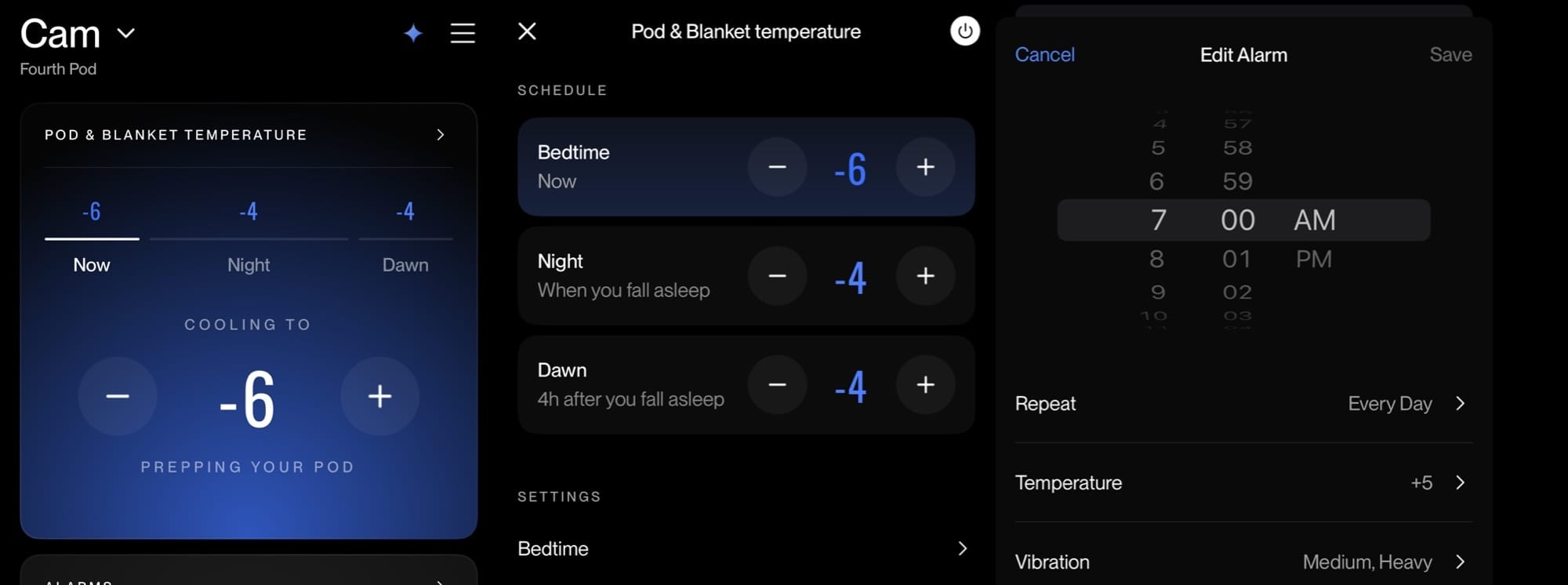
So the multi-thousand dollar question is, does this temperature control actually improve sleep quality?
Well, according to an Eight Sleep study, of the 300 users tested via an Oura Ring, they averaged a 10% increase in their deep sleep. However, this study doesn’t tell you much because it would’ve been thrown out if it didn’t prove that Eight Sleep was helping people, which is why I tried to get my own data.
Over the last few years, I’ve tried to objectively test the Pod’s impact on my sleep quality, but it’s challenging. When the Eight Sleep Pod isn’t running, the foam padding actually makes the bed hotter than my bare mattress would be. Plus, sleep quality is heavily influenced by daily variables like caffeine, alcohol, and even sunlight exposure, which are tough to control consistently. And honestly, rigorous sleep testing is kind of miserable.
Back in 2022, I managed to conduct a more controlled experiment by alternating nights with the Pod enabled and disabled for 60 days. According to my Oura Ring, I saw around a 5% combined increase in deep and REM sleep, equating to about 12 extra minutes of quality sleep per night. But in the next years, I couldn't replicate those clear results, which makes my 2022 data about as useless as Eight Sleep’s own studies.
Sometimes I overcomplicate things with data to justify my purchases. In this case, it's simple: I like sleeping cool, and in my experience, the Pod 5 is the easiest and most effective way to make that happen.
Comfort Observations
Each new generation of Eight Sleep’s Pod has typically brought significant comfort improvements. This year, that streak ends. As far as I can tell, the Pod 5 feels exactly like the Pod 4, which isn’t a bad thing at all. Last year, the Pod 4 removed the stiff encasement cover from older models and swapped the water mat for a tubing system, which made the bed feel almost like your bare mattress.
That's a big step up from the Pod 2, where you could feel the coils, the padding was stiff, and an awkward strap ran underneath the cover. All of that made it obvious you were sleeping on a tech device rather than your mattress, and the padding degraded quickly over time.
With the base feel solved, there’s one comfort quirk worth calling out. If the two sides run different temperatures, you’ll notice an invisible barrier where the zones meet. It works for me because I like my space, but it isn’t ideal for couples who sleep close.
Quick Blanket Takeaway
I’m usually a side sleeper, but during hot months I’ve flipped to my back or stomach to keep more skin on the cool cover. But Eight Sleep's blanket fixes that and now I just sleep how I want and stay comfortable.
The blanket plugs into the cover and mirrors each side’s temperature. There are water tubes running through it like the cover. The first few minutes feel amazing, like sliding into a cool burrito, then the effect settles. If I get out of bed in the middle of the night and come back, it can feel jarringly cold for some reason, so I usually need to lower the Pod temperature, which is inconvenient.
Quick facts:
- Weight: My king blanket weighs about 22 lb filled with water and in a duvet cover, compared to my old 8 lb comforter. Weighted-blanket fans will like it, but most people will likely find it heavy.
- Care: The blanket itself isn’t washable, so a duvet cover is basically required unless you want to sleep in five years of sweat, drool and dead skin.
- Fit and attachment: There are two hoses that exit at the foot, so a bottom-zip duvet cover can only be zipped about 25%. Since the blanket's outer sheeting isn’t fully attached and most duvet covers don’t anchor well, the blanket feels often misaligned and/or bunched. Eight Sleep’s $200 custom duvet cover should fit better.
- Feel and mobility: A normal comforter is soft, cozy, and free moving. Eight Sleep's feels more like a stiff tech layer with tubing running through it. The hose attachment limits movement too, which ironically, makes it harder for your partner to steal your side of the blanket.
I’ll keep testing since I already bought it, but for most hot sleepers a light top sheet or thin blanket for about $50 gets you close without spending $1,000. Full review coming soon.
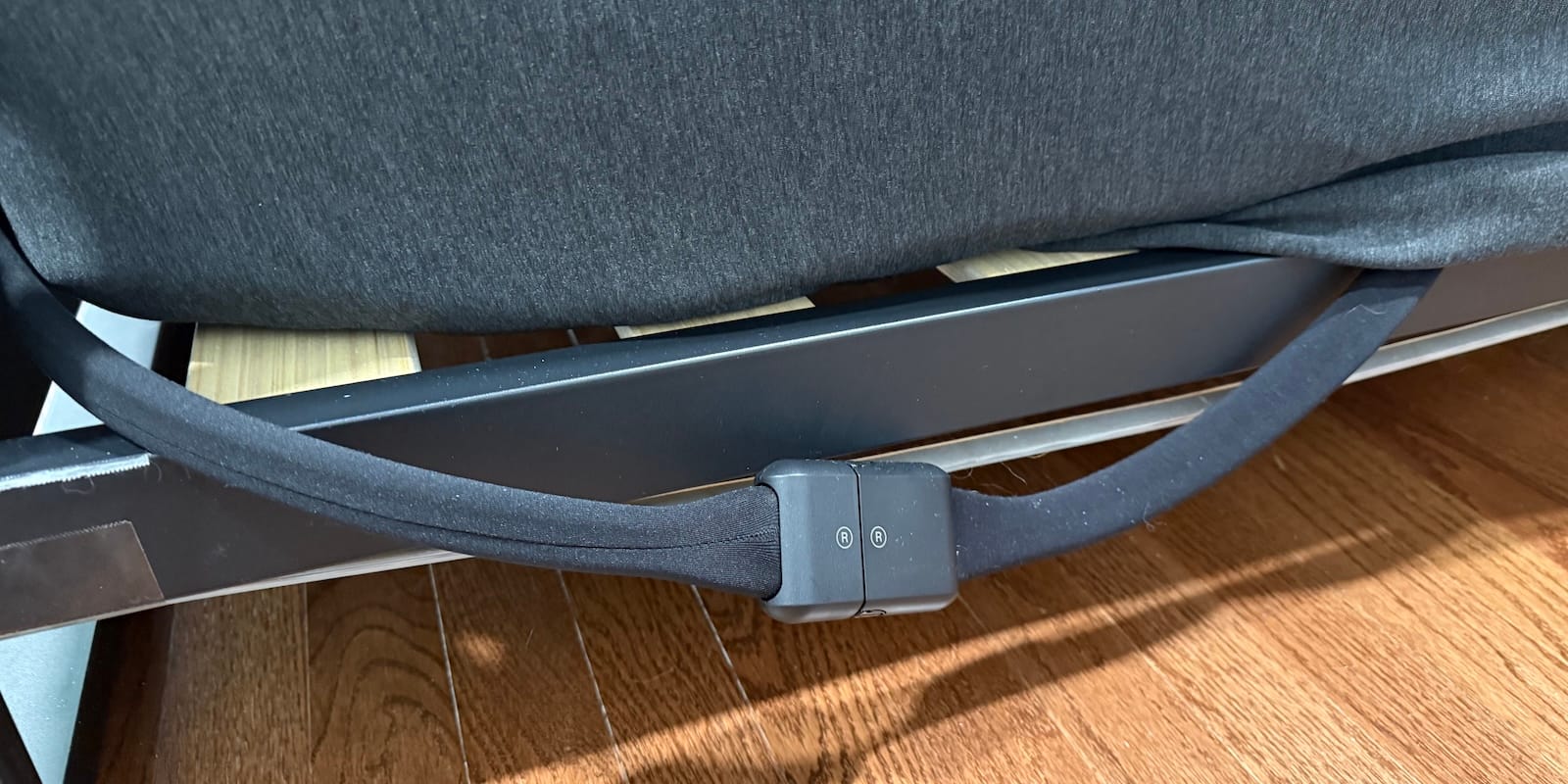
Day to Day Operations
In over four years with Eight Sleep, they’ve had four major app redesigns, which shows they’re striving to improve things, but it’s annoying to relearn a new interface frequently. After the initial setup, I just let the scheduled temperatures do their thing and only use the app for sleep tracking.
With older generations, if I felt hot in the middle of the night, I’d often avoid lowering the temp because I didn’t want to blind myself with my phone screen. The Pod 4 solved this with tappable zones, but Eight Sleep switched to physical temperature buttons with the Pod 5. This is the most noticeable difference between the two models. Personally, I'm fine with either method, but my wife, along with most people on the internet, seems to prefer the new physical buttons.
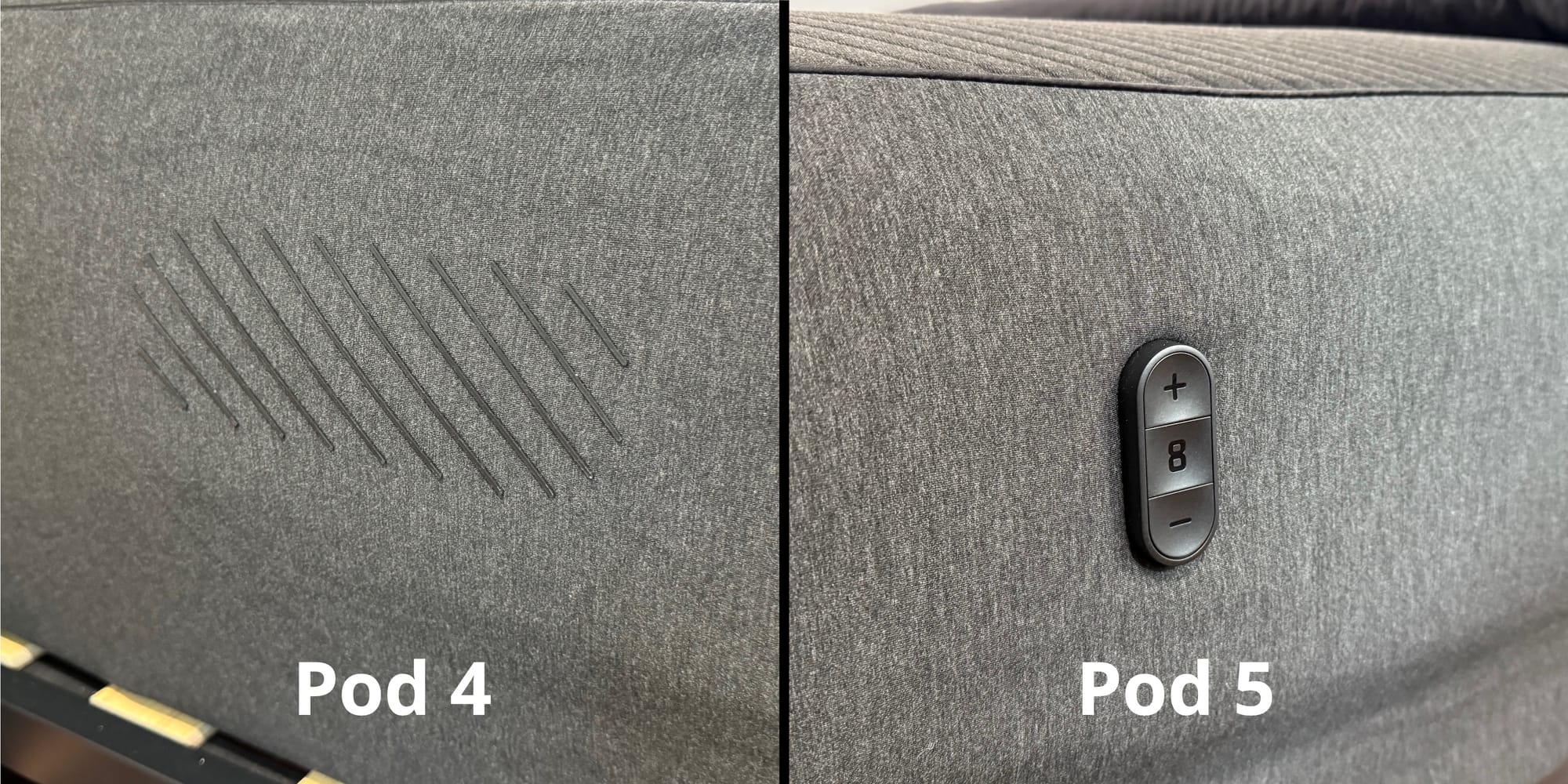
Eight Sleep also has an alarm feature called Gentle Rise that vibrates a single zone of the bed and adds heat or coolness when it’s time to wake up. When it’s your partner’s side of the bed vibrating, you won’t feel the vibrations, but you’ll likely still hear the bed shaking. This is more pleasant than your partner’s loud phone alarm blasting in the room, making it great for those with different sleep schedules. If you have the Pod 5 hub, you can use the built-in speaker as an alarm but I don't see the advantage over a phone alarm.
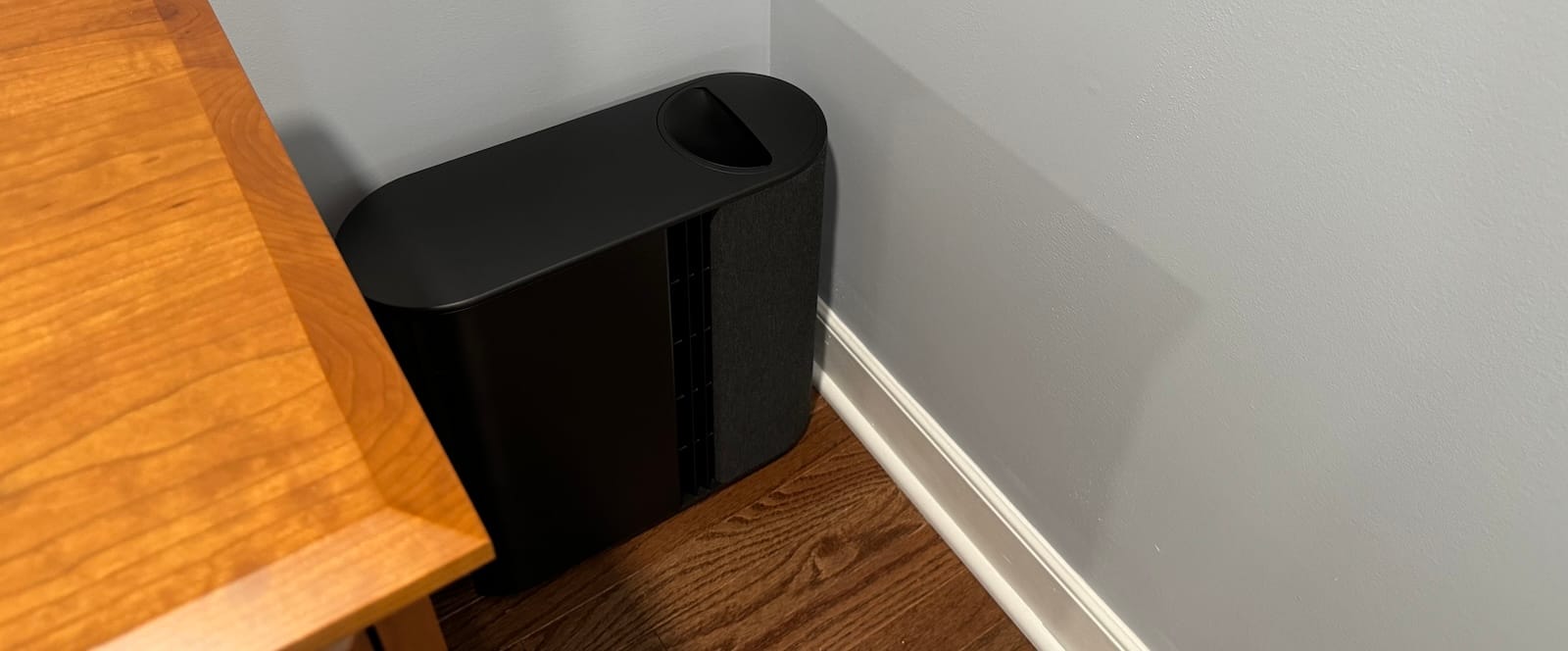
In my experience, when the room is hot or the hub is making significant temperature adjustments, it sounds like a computer tower fan. But once it reaches the target temperature, it runs quietly enough that you'll barely notice it, which is how it operates most of the night. Overall, the Pod 4 and Pod 5 hubs should sound similarly, while the Pod 3 was noticeably louder during big temperature changes. It's also worth mentioning that the hub itself generates a decent amount of heat during these active cooling periods, which is a reason why I don't recommend it for extremely hot bedrooms.
Health and Sleep Tracking
Eight Sleep tracks movements, sleep stages, and duration, then gives you a daily Sleep Fitness Score on a 100-point scale. The big win is convenience. No wearable needed, and it syncs cleanly with Apple Health.
Accuracy isn’t perfect. It can mistake stillness for sleep, and if I get up well before my wife it sometimes shows that I slept as long as she did. You can edit your wake time to fix duration, but it makes me question the precision of the sleep stages. I’ve been wearing Whoop and sometimes my Apple Watch at night to compare. In my testing, wearables seem a bit more accurate overall, but my routine is chaos right now with two kids under three, middle-of-the-night get-ups, and the occasional toddler in bed. That could easily be skewing Eight Sleep’s results. If your schedule is normal, you’ll likely see more consistent data.
The core health metrics (heart rate, HRV, and respiratory rate) feel directionally accurate. They’re useful for recovery trends and for spotting when something is off. I’ve had the flu twice and saw a big HRV drop before I felt truly sick.
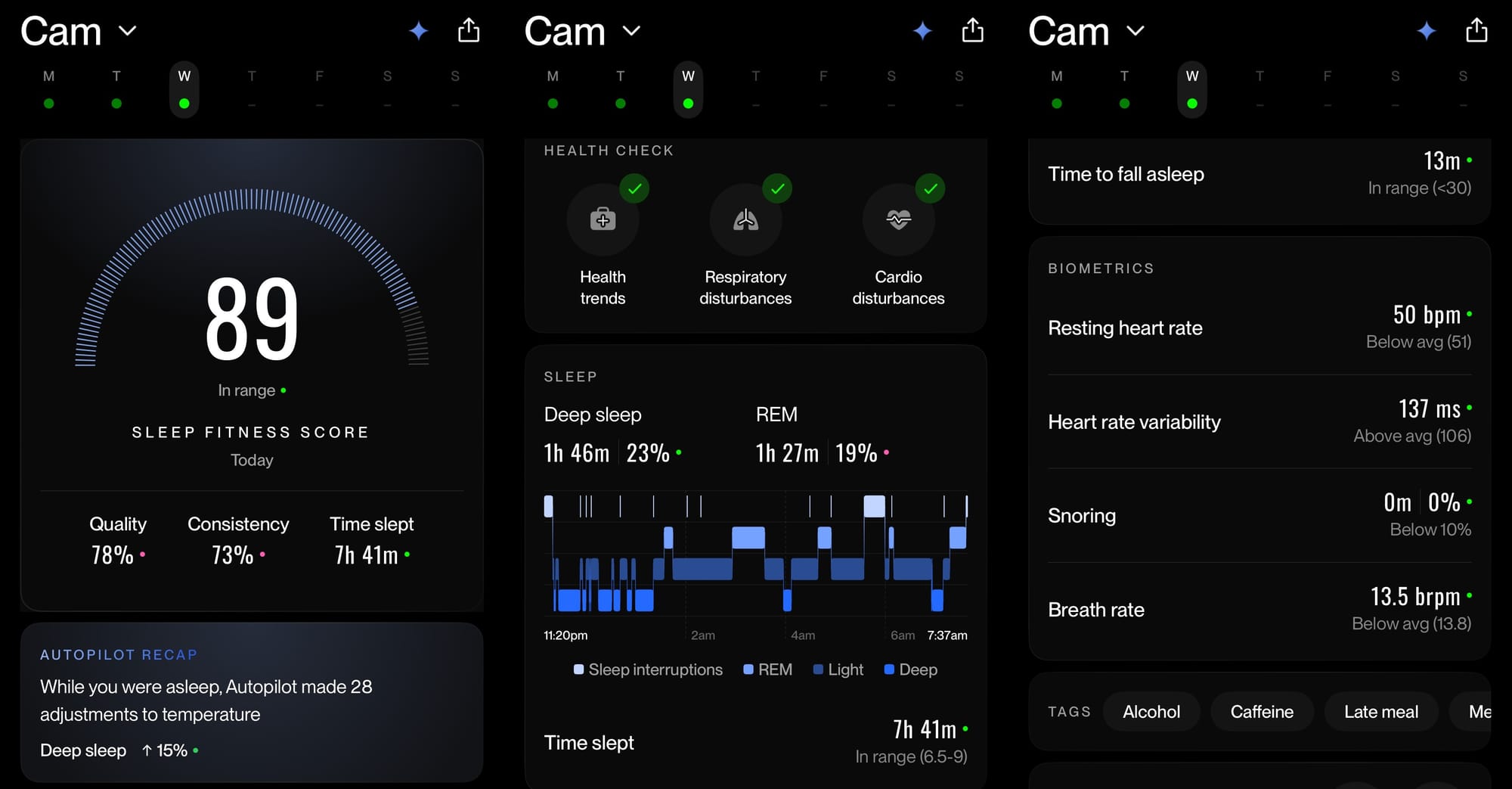
Pet note: we don’t let our dog on the bed, but if you do, expect some tracking noise, and claws can damage the cover. Eight Sleep recommends a thick comforter under pets.
Bottom line: if you and your partner stay on your sides and you don’t have pets or babies joining you, the convenience of automatic tracking is great. It may not beat a dedicated wearable on accuracy, but the zero effort data is hard to beat.
Durability and Maintenance
In the past, Eight Sleep’s pump would get noisy every 6–8 weeks, and the fix was to add water and "prime the pump" in the app. Now the pump primes itself automatically each day, so the only manual maintenance is topping off the tank every few months and swapping the filter twice a year, which Eight Sleep mails to you.
As for durability, I used the Pod 2 for almost a year with no issues until I removed the cover and found a hydrogen peroxide ring near the pump connection. My sheets were never wet and the mattress was fine, but it looks like it would've eventually lead to a major water leak. Eight Sleep replaced the cover for free within a week, which was great customer service, but it made me wonder about long-term reliability since other Pod 2 owners had similar problems.
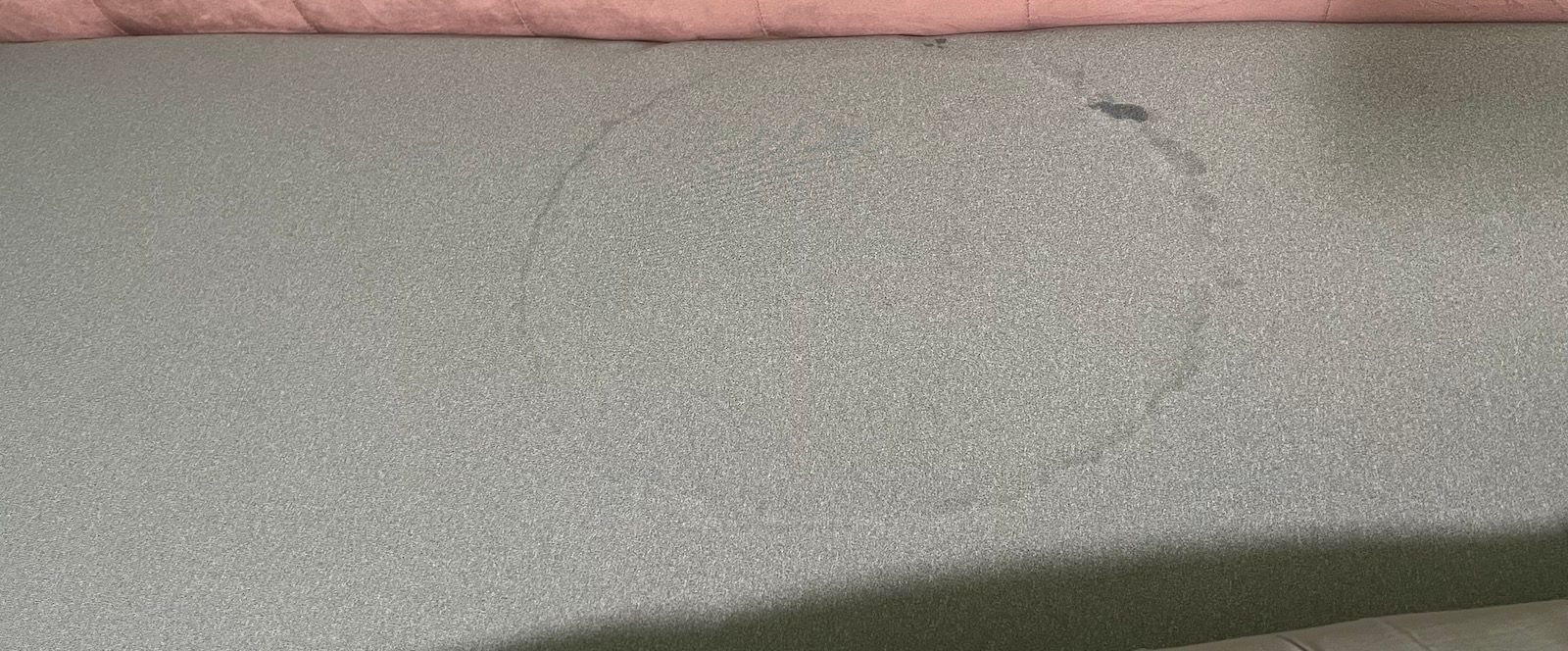
Fortunately, I slept on the Pod 3 for a year and then the Pod 4 for another year without experiencing issues with either. Eight Sleep says the cover is "rigorously tested to simulate 10 years of use and as a result leaks are rare."
Based on fewer complaints online, it seems Eight Sleep addressed leak concerns effectively with the Pod 4's tubing system. However, the real test will be how well these covers hold up after several years of continuous use. I can only test one Pod at a time, so it’s hard to fully assess long-term durability.
Either way, longevity is something to consider when dropping thousands on a cover. Eight Sleep comes with just a two year warranty, but some people may want to upgrade to the Enhanced subscription plan, which essentially acts as an insurance policy for $100/year.
Cost and Value
A couple of years ago, Eight Sleep put the majority of its features behind the paywall. Now, the Autopilot Standard ($199/year) subscription is mandatory for the first year of ownership.

The good news? You can cancel after the first year. The bad news? You’ll only get manual temperature control. Health and sleep tracking, vibration alarms, and scheduled heating and cooling are all disabled without the subscription.
If you don’t care about sleep tracking, you might be able to get by without it, but remembering to manually start the Pod every night an hour before bed isn’t ideal.
No one likes subscriptions. However, Eight Sleep customers should frame the subscription differently. If you plan to keep your Pod for five years you’re looking at $955 in membership fees, on top of the $3,049 (King in this example) for the cover. Don't think of it as subscription, it's just part of the deal. So the real question is: are you cool with spending $4,044 for the Pod 5?
I’m grandfathered in and have the subscription free for life, but if I were a first-time buyer today, I’d still buy the Pod 5 and reluctantly subscribe. That said, the ongoing cost will rightfully push some people away.
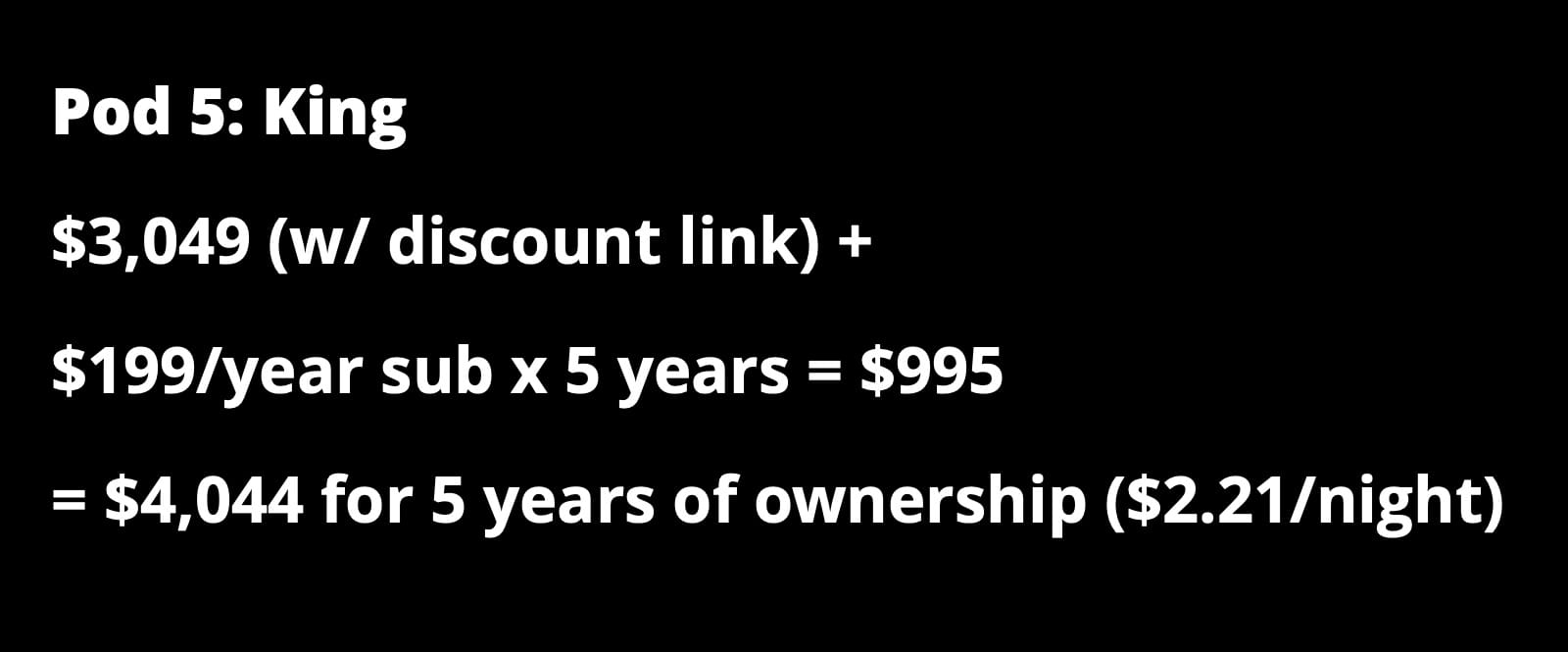
Who shouldn’t buy one?
Personally, as a busy entrepreneur and dad, I want the best sleep possible and I'll spend irrational amounts of money to do that. But the Pod 5 won't be for everyone.
Here are five types of people who should think extra hard before buying one:
- Single people. If I were single and could control my bedroom’s temperature, I'd save $4,000 and keep a window AC at its lowest setting in the summer or use minimal heat in winter. I've slept perfectly most of my life that way.
- Extra hot room. An Eight Sleep won’t be a game changer in a 90-degree room; you still need a reasonable baseline temperature if you want to feel cool. Plus, the hub puts off a decent amount of heat.
- Content with your sleep. If you’re already sleeping well, the Pod might not be worth it. It’s expensive and won’t magically boost your energy like the marketing and influencers might want you to think.
- Like to snuggle. The dual zones create a weird situation if you have different temperature preferences than your partner. There’s a temperature barrier and going over to the other side makes sleep tracking less reliable.
- Pod 4 Owners. Unless you're dead set on getting the new Eight Sleep blanket, there's no reason to upgrade from the Pod 4. The only noticeable difference is the buttons instead of the tappable zones.
However, if you’re in a good spot financially, and set on getting the Pod 5, I won’t talk you out of it, even if you fit one of the categories above (it just might not be the best value).
The ideal buyers for the Pod 5 are couples who fight over room temperature. And if you've recently been uncomfortable while sleeping, the Pod 5 is worth trying with Eight Sleep's 30-night trial. See if it makes a difference for you, and send it back if it doesn't.
I believe I've addressed almost everything in this review, but I created an FAQ page with additional information too. If you have any questions that I didn't cover, feel free to ask them in the comments section below.
Disclosure
Four years ago, when I wrote my original Pod 2 review, I had no relationship with Eight Sleep. I was just a happy customer. Later they invited me to their affiliate program. I joined with a few conditions: I buy every product myself, I won’t change content for their brand, and I won’t work on their ad campaigns.
I’ve bought four Pod covers with my own money. If you use my link, I earn a commission at no extra cost to you, and it helps keep this site alive. The link should auto-apply $200 off. If it doesn’t, enter code "CAM" at checkout. This is a standard affiliate discount and not exclusive. Use whatever link works for you, and thank you if you choose to support my work.


